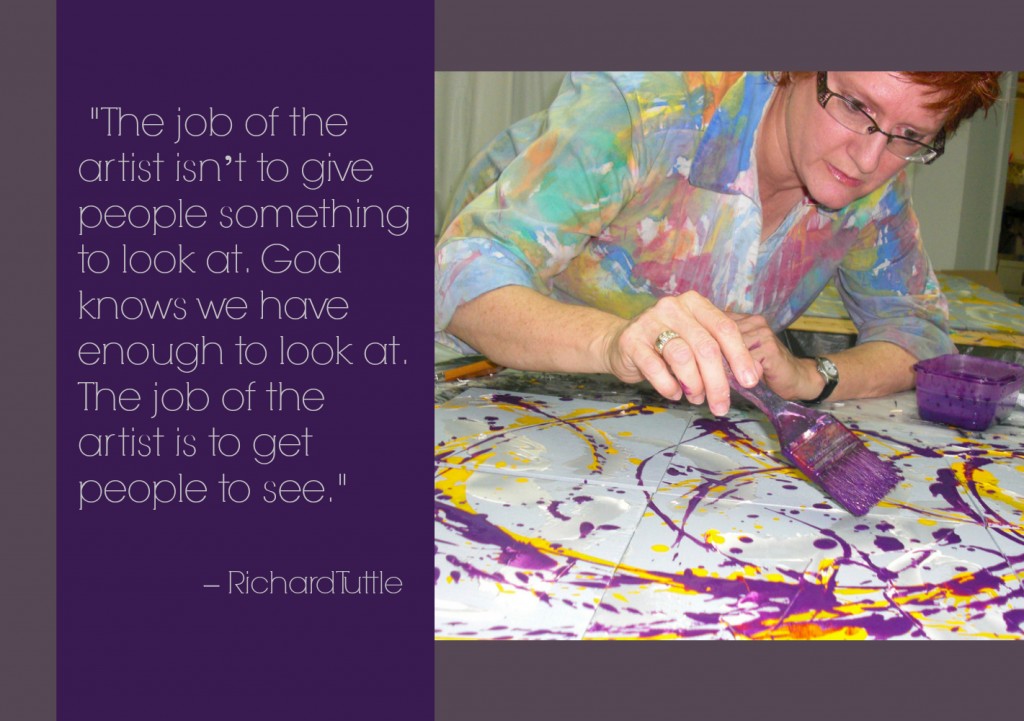The Difference Between Looking and Seeing
Do you remember that scene in National Lampoon’s Vacation where the Griswolds visit the Grand Canyon? They stand on the edge of the majestic vista, arms looped lovingly around each other, and glance at the canyon for about two seconds when Chevy Chase says, “Ok, let’s go!”
The Grand Canyon, that national attraction which drew over 4 million visitors in 2014 and where people spend hours, days, or even weeks hiking, taking a scenic drive, or photographing the views – the Griswolds took it all in before you could even say, “Grand Canyon!” That is the perfect example of the difference between looking and seeing – clearly, the Griswold’s looked, but they certainly didn’t see.
While it was National Lampoon’s and obviously meant for comedic effect, there’s some truth to it! How many times do we look at something and not really see it? For example, does your watch have Roman numerals or Arabic numerals? What color is your neighbor’s front door? Don’t peak – just think about whether you’ve ever noticed. Most of us walk around unobservant to almost everything going on around us.
It turns out the difference between looking and seeing can have devastating effects. Getting hit by a car is among the leading causes of death for children ages five to nine. While one might guess it’s because children are reckless or impatient, recent studies suggest that these young pedestrians simply don’t see cars coming toward them. London researchers have found that kids’ perceptual and attention abilities are slow to develop, making noticing an oncoming car difficult. If children don’t even see the car coming toward them, they certainly aren’t assessing the vehicle’s proximity and speed in order to cross the street safely. They may look before they cross – but they may not see. In this case, the difference between looking and seeing could mean life or death.
This same phenomenon of looking without seeing applies when we’re watching a magician but never see how a trick is accomplished. The magician could be right in front of us, and through slight of hand, misdirection, or distraction, we miss the crucial moment when the trick might reveal itself. In fact, magic is nine-tenths distraction. The coin does not vanish, the card does not magically appear, but rather you are cleverly misdirected and your own brain deceives you. You look but you don’t see!
Looking and Seeing
So what is the difference between looking and seeing?
Webster’s says that to look means to direct your eyes in a particular direction, while in order to see, you must notice or become aware of someone or something by using your eyes. Becoming aware is key – it’s a wakening of the senses, an experiential process. For some, this comes naturally, but for a lot of us, it’s a skill that must be honed, like any other.
Seeing is not only noticing that something is, but understanding it, attending to it, and looking past the obvious to enjoy its meaning and nuances. This takes time, patience, and attention to detail. Though we spend most hours of our days with our eyes wide open, we certainly don’t spend that entire time seeing. Perhaps we are so inundated with visual input that we simply can’t take the time to attend to it all, and maybe we need a little help figuring out what actually matters.
“The art of seeing has to be learned.” – Marguerite Duras
Think about the last time you were in a museum. How long did you pause in front of the art? The Louvre found that people study the Mona Lisa for an average of just 15 seconds. 15 seconds to take in every line, every contour, ponder every meaning of what is perhaps the most famous painting in the world!
We know that you do not see with your eyes alone, and that it is instead a combined effort of the eyes and the brain, which work together to sort out visual input and arrange it into meaningful images, full of context and significance.
Learning to see, to appreciate, and to understand visual input is a key component of PuzzleArt Therapy. This skill takes time and practice in order to develop the neural pathways in the brain that allow for full visual comprehension, but it is so worth it.
“It’s not what you look at that matters, it’s what you see.” – Henry David Thoreau
Imagine that you’ve spent your life with black and white vision only, and that one day, you begin to see in color. How would you feel? What would you want to see, to take in? It may not be quite as stark as that, but you’ll be amazed at what you’ve been missing once you start to see it clearly. Sign up for a free brain game today, so you can fully understand the difference between looking and seeing, and so you can finally see what you’re missing.
Alli Berman is a Brain Fitness expert and the Eye Brain Fitness Guru. She has been an artist, author, educator, creativity consultant, workshop leader, perceptual and sensory products and programs developer, and motivational speaker for the past 30+ years. Berman has served as an educational advisor to the American Academy for Anti-Aging Medicine for over 30 years, and she is the founder of The Art of Rehabilitation and Anti-Aging Art. She created the PuzzleArt Therapy System in collaboration with behavioral optometrist, Susan Fisher, OD, and through consultation with neuroscientists around the world. Berman uses the system herself on a daily basis to keep her own brain as healthy, engaged, and challenged as possible!

